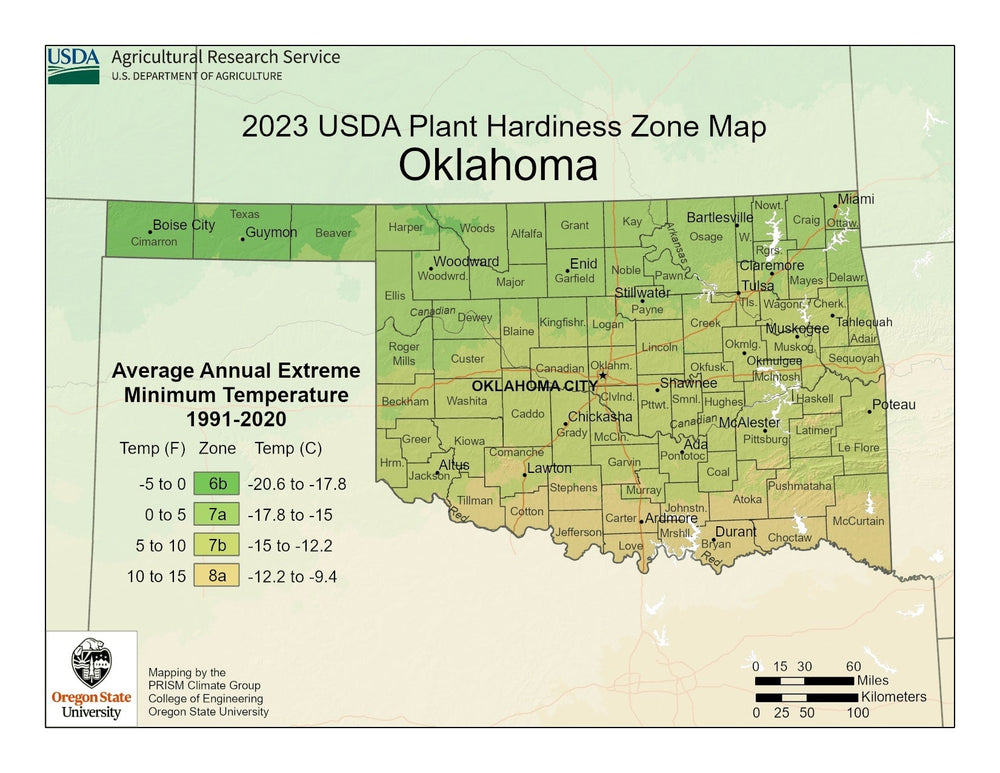Image from USDA
Characteristics of Oklahoma’s Planting Region
Oklahoma’s climate is classified as humid subtropical in the east and semi-arid in the west, making it one of the most ecologically diverse states in the U.S. The state’s central location contributes to dynamic and often extreme weather patterns, significantly impacting gardening.
As a gardener in Oklahoma, you can expect:
- Hot summers: July temperatures typically range from 85°F to 100°F (29.4°C to 37.8°C), especially in western areas.
- Mild winters: January averages fall between 25°F and 45°F (-3.9°C to 7.2°C), with occasional cold snaps.
- Long growing season: Frost-free days usually extend from late March to early November, providing around 200-230 frost-free days depending on location.
- Severe weather risks: Tornadoes, hailstorms, and high winds are common during spring and early summer.
The state’s soil types range from clay-heavy soils in central Oklahoma to sandy soils in the west. Microclimates and soil diversity necessitate tailored gardening approaches for each region.

Challenges of Growing in Oklahoma
Weather Extremes
Oklahoma’s unpredictable weather can be a challenge for gardeners. Sudden temperature shifts, drought conditions, and frequent spring storms can disrupt planting and harvest plans.
Soil Variability
Oklahoma’s diverse soil types require careful management. For example, clay soils in some regions may struggle with drainage, while sandy soils may need more water and nutrient supplementation.
Pests and Diseases
Hot, humid summers foster pests like aphids, spider mites, squash bugs, and fungal diseases that can damage crops and ornamentals.

The Benefits of Using a Greenhouse in Oklahoma
A greenhouse offers a controlled environment to combat Oklahoma’s challenging climate and improve gardening results:
1. Extend Your Growing Season
- Without a Greenhouse: Outdoor planting typically begins in late March and ends by early November.
- With a Greenhouse: Gardeners can start planting as early as February, continue harvesting into December, or even grow year-round with supplemental heating. This primarily benefits cool-weather crops like lettuce, spinach, and broccoli.
Learn more about your area's specific growing dates and the best vegetables to plant in each part of Oklahoma.

Customer images of their greenhouse setup in Oklahoma
2. Grow a Wider Variety of Vegetables
Without a Greenhouse: Crops suited for Oklahoma’s outdoor conditions include:
|
|
With a Greenhouse: A controlled environment makes it possible to grow a wider variety of plants, including:
|
|


